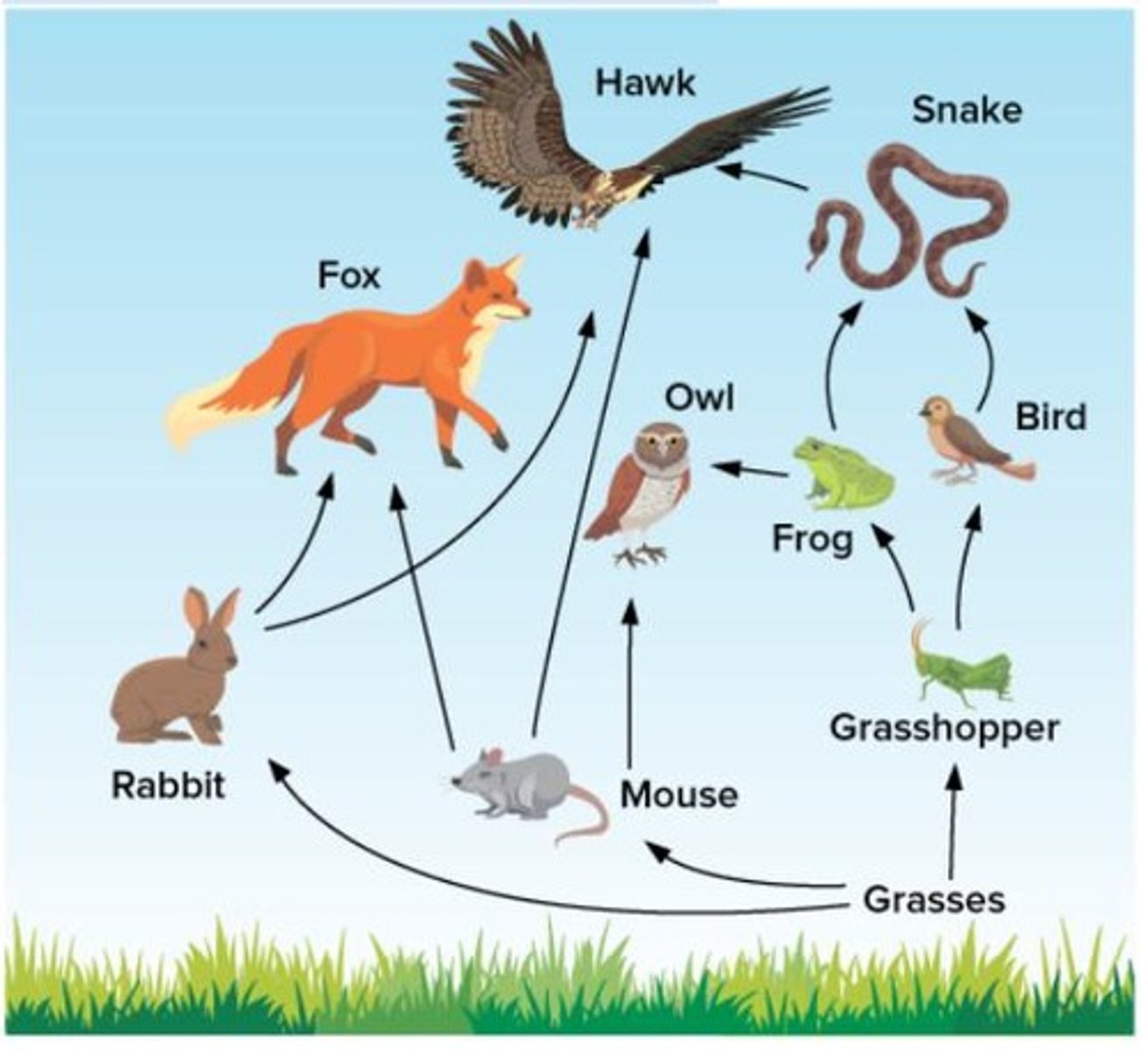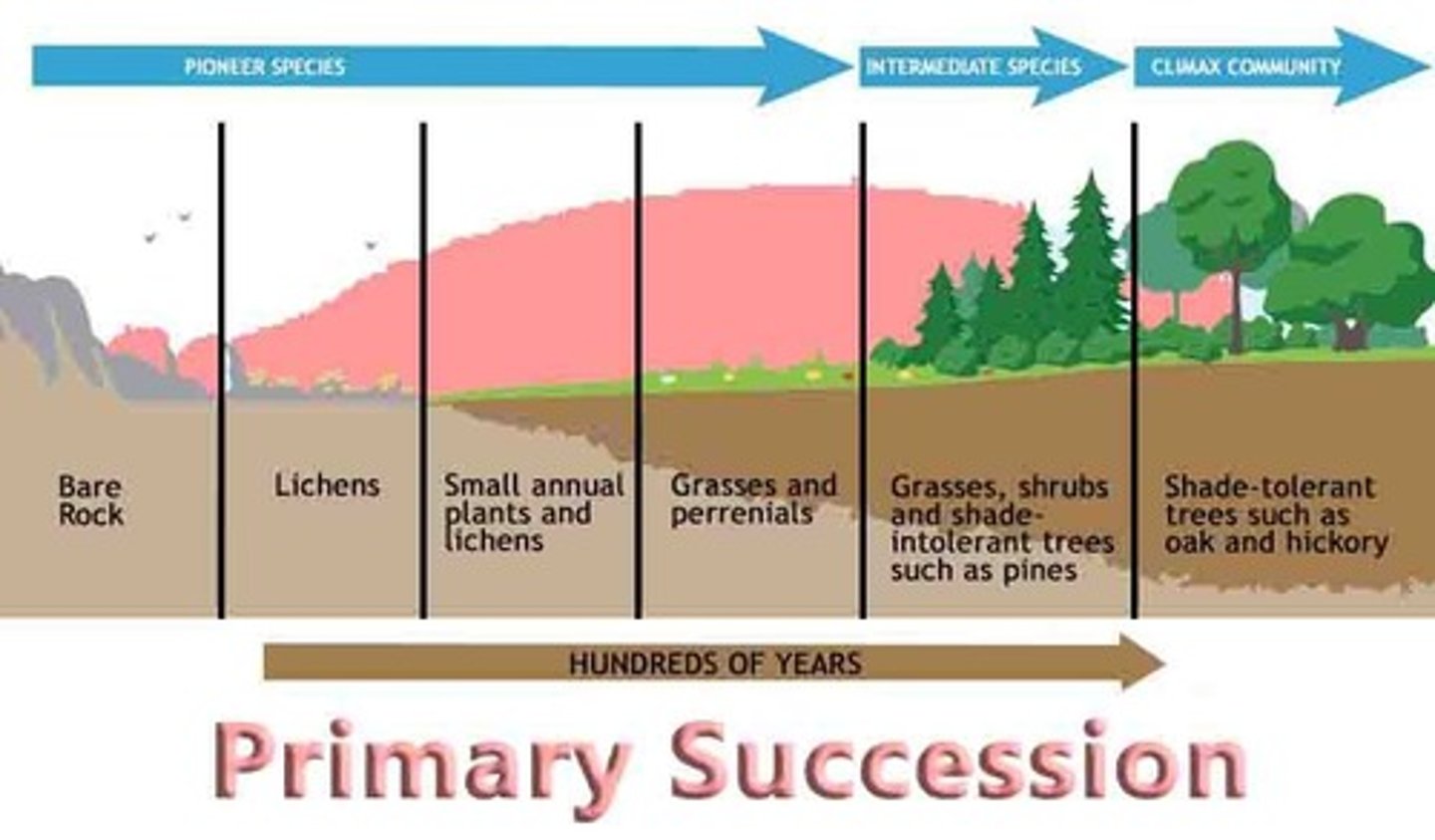Ecosystem Dynamics and Sustainability Review
1/50
There's no tags or description
Looks like no tags are added yet.
Name | Mastery | Learn | Test | Matching | Spaced |
|---|
No study sessions yet.
51 Terms
Food Chain
Single sequence of organisms showing energy transfer.
Food Web
Complex network of interconnected food chains.

Biodiversity
Variety of organisms in a specific habitat.
Ecosystem Services
Benefits provided by healthy ecosystems to humans.
Sustainability
Maintaining ecosystem balance for thriving populations.
Overharvesting
Exceeding species' natural reproductive capacity.
Primary Succession
Development of life in barren, lifeless areas.
Pioneer Species
First organisms to colonize barren environments.
Climax Community
Stable ecosystem with little species change.
Secondary Succession
Recovery of ecosystem after disturbance with soil.

Little Ice Age
Period of regional cooling from 1300 to 1850.
Disturbance
Event partially destroying existing ecosystems.
Invasive Species
Non-native species disrupting local ecosystems.
Ecological Balance
Equilibrium among species and their environment.
Resource Utilization
Using resources sustainably within an ecosystem.
Environmental Change
Alterations in ecosystem conditions affecting species.
Carbon Sequestration
Process of capturing and storing atmospheric carbon.
Habitat Restoration
Rehabilitating degraded ecosystems to original state.
Pollution Reduction
Minimizing harmful substances in the environment.
Ecosystem Resilience
Ability of an ecosystem to recover from disturbances.
Genetic Variation
Diversity of genes within a species population.
Food Security
Access to sufficient, safe, and nutritious food.
Ecological Disruption
Interference with normal ecosystem functioning.
Soil Development
Formation of soil through organic matter accumulation.
Glacial Expansion
Growth of glaciers due to cooler temperatures.
Crop Failures
Reduced agricultural yield due to adverse conditions.
Famine
Severe shortage of food affecting populations.
Ecosystem Health
Condition of an ecosystem's structure and function.
Eutrophication
Nutrient overload in water, causing excessive algae growth.
Dynamic Equilibrium
Balanced state with constant changes, maintaining stability.
Biodiversity Index
Ratio of species count to total organisms in an area.
Sustainable Ecosystem
High biodiversity, balanced energy flow, adaptive recovery.
Trophic Levels
Feeding positions in an ecosystem's food chain.

10% Rule
Only 10% of energy transfers to the next trophic level.
Grassland Ecosystem
Region dominated by grasses, supporting diverse wildlife.
Ecosystem Stability
Ability to withstand disturbances due to biodiversity.
Nutrient Overload
Excess nutrients leading to ecological imbalance.
Habitat Loss
Reduction of living spaces for species due to human activities.
Ecological Roles
Functions species perform within their ecosystem.
Species Interdependence
Reliance of species on each other for survival.
Predator-Prey Dynamics
Interactions that regulate populations of species.
Ecosystem Recovery
Process of regaining stability after a disturbance.
Nutrient Cycling
Movement of nutrients through ecosystems, essential for life.
Aquatic Life
Organisms living in water, affected by eutrophication.
Species Diversity
Variety of species within a given ecosystem.
Energy Pyramid
Visual representation of energy flow in ecosystems.
Ecological Disturbance
Event disrupting ecosystem structure and function.
Natural Selection
Process where organisms better adapted survive and reproduce.
Species Extinction
Permanent loss of a species from the ecosystem.
Habitat Fragmentation
Breaking up of habitats into smaller, isolated patches.
Ecological Succession
Gradual process of change and replacement in ecosystems.
